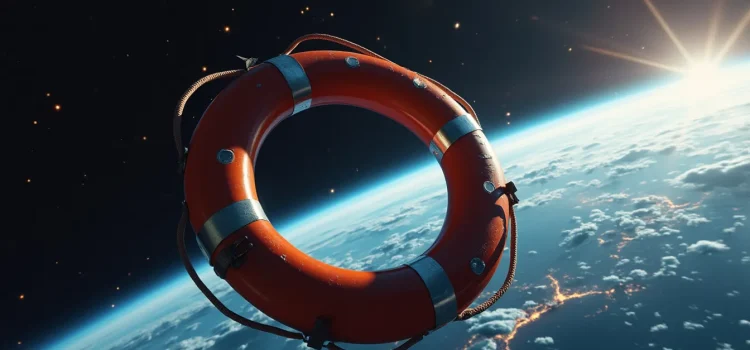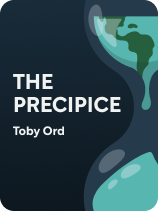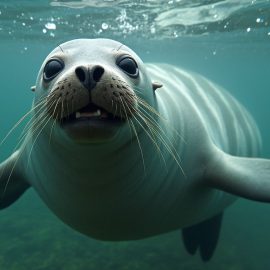

This article is an excerpt from the Shortform book guide to "The Precipice" by Toby Ord. Shortform has the world's best summaries and analyses of books you should be reading.
Like this article? Sign up for a free trial here.
Are we on the brink of extinction? Can humanity be saved from existential threats?
Toby Ord’s book The Precipice explores these pressing questions. He outlines potential catastrophes and offers strategies to prevent them. Ord believes we can take steps to avoid disaster and reach our full potential as a species.
Read on to discover how to save humanity and secure a brighter future for generations to come.
How to Save Humanity
In his book, Ord outlines the risks we face. Then he explains that we need to employ strategies to prevent them from materializing. We’ll explain Ord’s strategy for understanding the development of existential threats and his views on how to save humanity from these threats. He believes that we can take steps toward not only preventing them but ensuring we reach our full potential.
The Development of Existential Risks
Ord explains that the first step in preventing existential risks is understanding their stages of development so we can intervene. There are three stages of an existential threat: initiation, growth, and completion. Initiation is the start of the issue—the result of either natural or anthropogenic causes. Growth is the means by which the problem scales in size (becoming a global problem). Completion refers to how, exactly, the problem results in extinction or permanent limitation of human potential—for example, by famine and population reduction.
To prevent initiation, we need to consider potential risks and their underlying causes—natural or anthropogenic—so we can take actions. For example, we would want to prevent another world war because that would greatly increase the potential for nuclear war and environmental damage. If we fail to do so and catch the catastrophe in its growth phase, we must develop responses to limit its spread. If we catch it in the completion phase, we must focus on survival strategies—ways we can endure the effects that would otherwise result in existential catastrophe.
| Existential Catastrophes and Possible Interventions Researchers from Effective Altruism illustrate the ideas that Ord discusses with examples. To increase our understanding of ways catastrophes can develop and how we can intervene, let’s take a look at their explanation of how extinction could occur due to a pandemic from biological weaponization. First, the initiation stage of this catastrophe would be a researcher creating a new pathogen and information on the pathogen being published to spread public awareness. In the growth stage, an entity (like a government) would then use that information to produce and release the pathogen, causing a pandemic. The completion phase would entail events like population loss and the breakdown of states and trade, then extinction. To prevent the initiation stage from occurring, the following steps could be taken: 1) prevent/restrict funding for such research by raising funders’ awareness of the risks, 2) improve researchers’ choices on what to study and publish, 3) change incentives and norms among research journals around what to publish. To prevent the growth phase, the following steps could be taken: 1) limit access to biotechnology so entities can’t reproduce pathogens, 2) improve systems for detecting pathogens and developing vaccines. To prevent completion, we could utilize refuges, and research and develop alternative methods of food production that could feed a population with dwindling workers. |
Prioritizing Prevention
Ord says we also need to develop a strategy to determine which risks to focus on first, and which to put most of our time and resources into. For example, we should prioritize risks that precipitate other risks because they have a higher chance of resulting in an existential catastrophe—for instance, nuclear war might not kill us off, but the environmental damage that occurs as a result might.
(Shortform note: Existential risk researchers have combined Ord’s research with that of other scholars to create a list of how we should prioritize existential risks. Presently, the biggest threat is unaligned AI followed closely by a human-developed pandemic and other potential man-made risks (for example, if we develop dangerous nanotechnology in the future). Next is nuclear war, climate change, and environmental damage. Following this is a natural pandemic, and then a supervolcanic eruption. At the bottom of the list is flood basalt (another type of volcano that floods vast areas of the earth with lava), an asteroid, or a supernova.)
In these calculations, says Ord, we should also consider actions or factors that reduce the potential of certain risks. For example, decreasing global economic disparity may not seem like a direct prevention of nuclear war, but it contributes to mitigating the risk by making countries more stable, self-sustaining, and peaceful.
(Shortform note: The Simon Institute for Longterm Governance has developed a comprehensive list of actions that can be taken to reduce existential risk by 2030. The two main priorities of these actions are to 1) improve citizens’ and governing officials’ understanding of existential risks, and 2) improve the way governing bodies handle existential risk (how they contribute to research and prevention). The list includes actions such as 1) creating a “global risk register,” which prioritizes risks according to severity, probability, and origins; 2) formulating best practices at national, regional, and international levels; and 3) increasing investments in AI safety.)
Preventing Catastrophe & Safeguarding Our Future
According to Ord, preventing existential catastrophes and safeguarding the potential of humanity requires change on a large and small scale. On a large scale, governments worldwide need to work together and create policies and projects to mitigate current risks, prevent future ones, and work toward a brighter future. Currently, most nations rely on other nations to engage in prevention while they continue with business as usual, ultimately increasing the risk of a catastrophe occuring due to negligence.
Instead, Ord suggests we form international institutions focused on prevention, in which all nations participate. We should also strengthen existing institutions and policies dedicated to prevention such as the World Health Organization and nuclear arms treaties. Further, Ord emphasizes the importance of prioritizing an increase in human understanding before an increase in technological advancement—in other words, before developing a technology, we must take time to understand the full scope of potential consequences, good and bad. If we can’t do this, it may be necessary to slow our technological advancement.
However, technological advancement is still important. We need to increase our scientific knowledge so we can develop methods and technologies that can help us mitigate risks. For example, establishing human life on another planet would provide a failsafe to preserve the species, even if we’re able to survive until the end of the sun’s lifespan.
(Shortform note: Scientists have been searching for Earth-like planets for years. In 2023, they found a close match: a planet called Giese 12 b. It’s about 40 light years away and has a warm surface temperature of about 42°C. Scientists are searching for more details about the planet like whether it has an atmosphere. However, even if Giese 12 b is a match, we still need to develop the technology needed to survive the 40-light-year journey there.)
We must also dedicate more time and resources to researching existential risks—discovering new ones, assessing the likelihood of different risks occurring, and determining how we can prevent, mitigate, and survive them. We must also spend more time researching how to make a better future for generations to come so we can reach our potential as a species.
| Mitigation Progress Since The Precipice Since the book was published, many, if not all, of the recommendations Ord makes on how to mitigate existential threats are being advocated for and executed with the help of the Simon Institute for Longterm Governance—an organization founded in 2021 to help multilateral organizations think long term. They make technical information actionable so officials can incorporate them into policy and decisions, as Ord suggests. They’ve contributed to major intergovernmental mitigation efforts, are continuously producing new research on existential risks, and have coordinated multiple workshops to encourage collaboration and action among researchers and policy makers. In 2023, the Simon Institute released a paper on how governments can join together to reduce existential risk by 2030, listing three multilateral pathways and 55 milestones to pursue, 12 outcomes to reach, two priority instruments to develop, and 30 actions to implement. The multilateral pathways target general existential risk, biosecurity, and AI governance and include milestones like holding conferences, creating certain treaties, and forming new committees. The outcomes listed in the report include increasing understanding of existential risk, management of risks, investments for risk reduction and resilience, and risk preparedness and response. On a practical level, this means encouraging collaboration between UN agencies to better tackle certain risks and having national governments dedicate a percentage of their budget to existential risks. The two priority instruments listed in the paper are 1) an international plan and agreement on who needs to do what to prevent and prepare for existential risks, and 2) mechanisms to direct more funding to low-probability, high-impact risks—risks that, while unlikely, will be disastrous. |
Ord says that, on a personal level, you can contribute to the cause by using your education and career specialities to help with research and prevention. If you’re not in a relevant field, you can donate to research centers, stay informed, and raise awareness through word of mouth.
(Shortform note: Other experts offer more specific advice on how the average person can get involved in existential risk prevention through their career. First, think about the kind of risk you want to focus on—for example, direct risks like pandemics or risk factors like global political instability. Then, brainstorm careers that can address these issues—for example, research or government policy. Finally, weigh your career options to determine the best one for you and identify the steps to pursue that career path.)
Humanity’s Potential
Ord explains that, if we’re able to prevent existential catastrophes and meet our full potential, the human species could have a long and happy future. Given thousands of years without adding pollution to the atmosphere, we could see the Earth heal itself—oceans and forests would be restored, excess carbon dioxide would be removed from the atmosphere, and biodiversity may even return. We could potentially even survive long enough to witness an interplanetary migration once our sun dies in eight billion years.
(Shortform note: If we’re not able to restore Earth and an interplanetary migration is required to save the species, Mars may be a viable option. Elon Musk and SpaceX hope to put a million humans on Mars by roughly 2045. The city plan calls for a large communal dome with smaller domes surrounding it where people would live. In one interview, Musk proposed heating the planet’s climate through a series of thermonuclear explosions that would create artificial suns. With time, Musk says it’s even possible we’d want to use bioengineering to create a new human species more suitable for life on Mars.)
Exercise
Of the individual actions Ord suggests (specializing in a career, donating to research centers, and raising awareness), which could you implement? Think of one concrete way you can do this.

———End of Preview———
Like what you just read? Read the rest of the world's best book summary and analysis of Toby Ord's "The Precipice" at Shortform.
Here's what you'll find in our full The Precipice summary:
- How an apocalypse that ends humanity is possible
- How we can still prevent an existential catastrophe
- The three most likely species-ending events in the future






